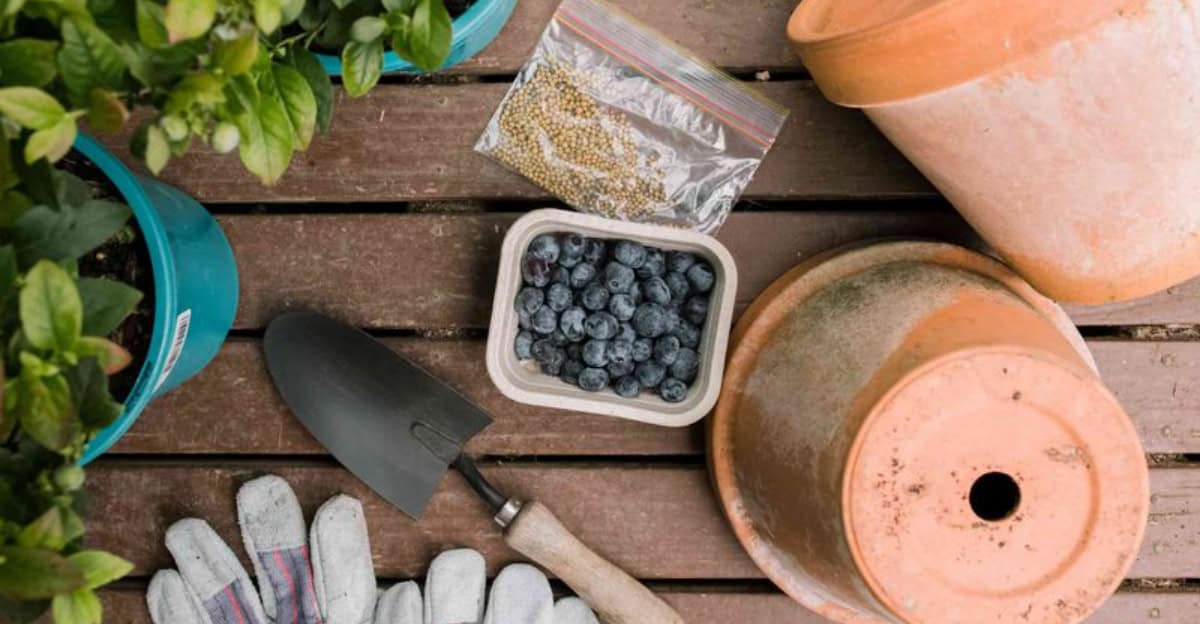Cultivating blueberries in containers is a rewarding endeavor that allows you to enjoy fresh fruit at home.
This guide provides essential tips to help your blueberry plants thrive in pots, ensuring bountiful harvests.
By following these practical and straightforward steps, you can successfully grow blueberries even with limited space.
1. Choose the Right Variety

Selecting a suitable blueberry variety is crucial. Look for types specifically bred for containers, such as dwarf or half-high varieties. These are compact yet productive.
Ensure the variety is suitable for your climate. Local garden centers can provide valuable advice. Choosing the right variety sets the foundation for success.
2. Use Appropriate Container
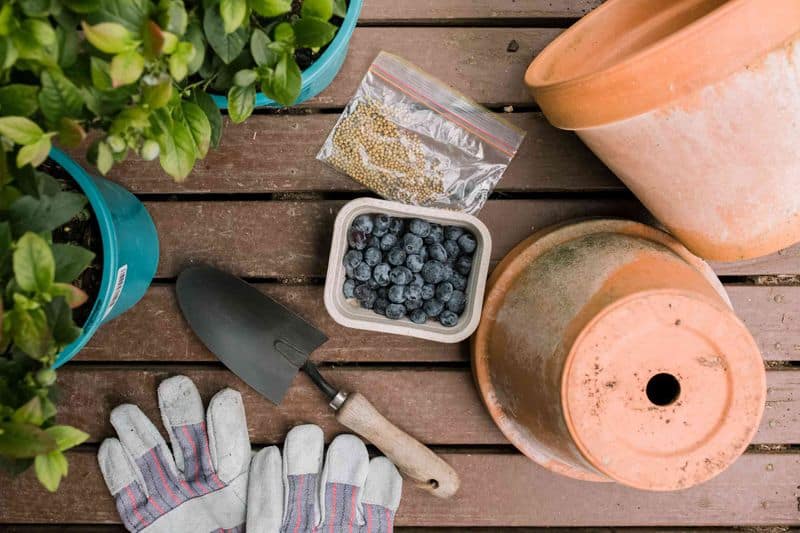
The container must have adequate drainage and be large enough for root growth. A pot with a capacity of at least 10-20 gallons is recommended.
Ensure it has holes at the bottom to prevent waterlogging. Consider using a container made of materials like ceramic or plastic, which retain moisture well.
3. Select Quality Soil
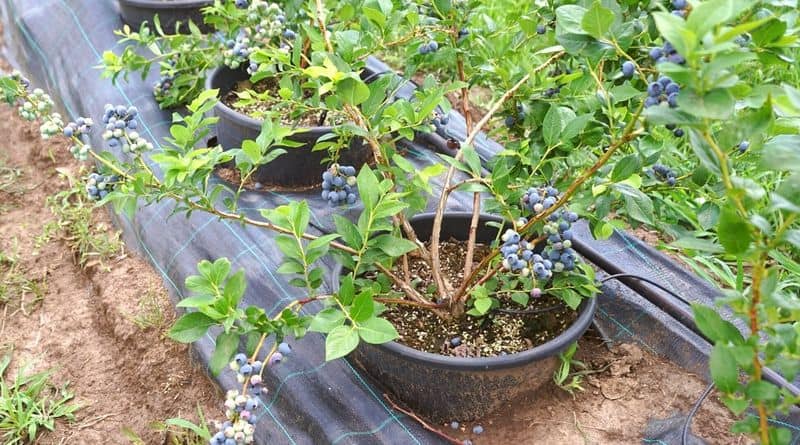
Blueberries require acidic soil with a pH of 4.5 to 5.5. Use a mix of peat moss, pine bark, and compost for optimal growth.
Quality potting soil with added organic matter is also beneficial. This helps in retaining moisture while providing necessary nutrients. Proper soil ensures healthy plant development.
4. Ensure Proper Drainage

Good drainage is vital to prevent root rot. Place a layer of pebbles or stones at the bottom of the container. This helps excess water escape efficiently.
Ensure your pot has multiple holes. Regularly check to ensure they aren’t blocked. Proper drainage maintains healthy roots, promoting vigorous growth.
5. Water Regularly
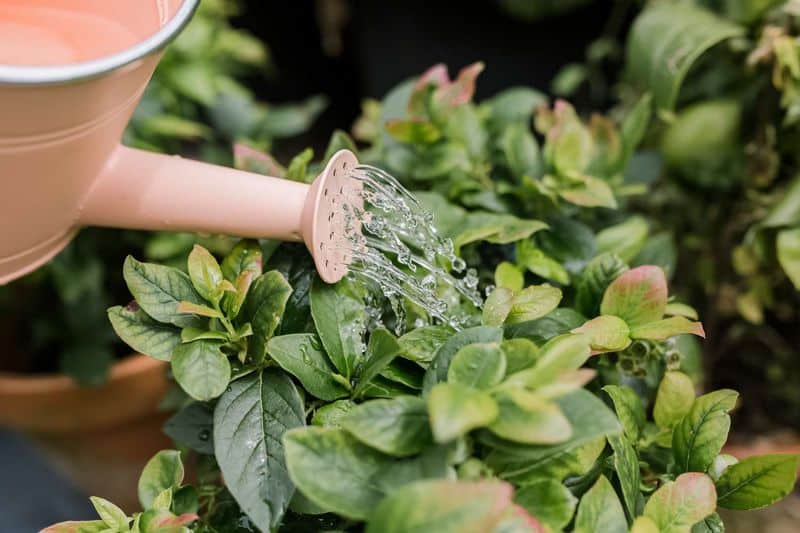
Consistent watering is key. Blueberries need moisture but dislike soggy roots. Water thoroughly until it drains out. During hot spells, check soil moisture regularly.
If dry, increase frequency. Use rainwater if possible, as it’s naturally acidic. Regular watering supports fruit development and overall plant health.
6. Fertilize Appropriately
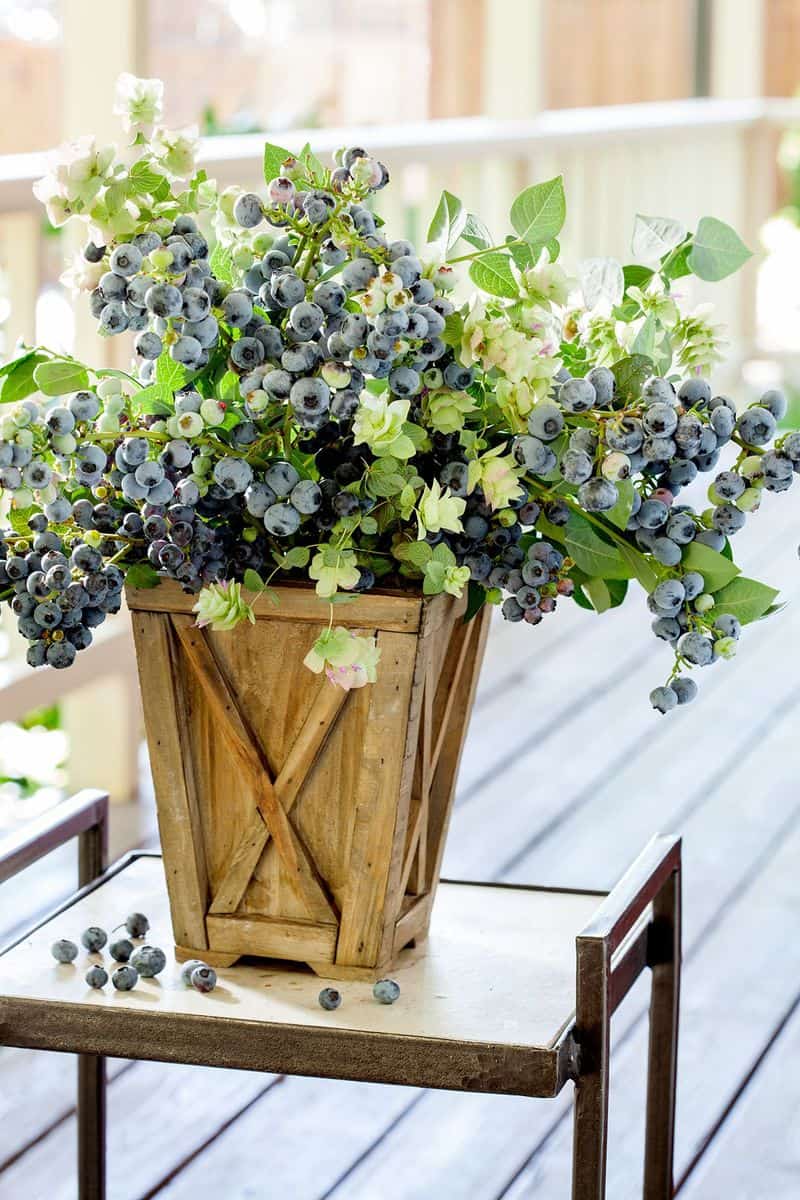
Fertilize with a balanced, slow-release fertilizer formulated for acid-loving plants. Apply in early spring and again in mid-summer. Use sparingly to avoid root burn.
Regular feeding encourages vigorous growth and abundant fruit production. Don’t forget to monitor plant health and adjust feeding as needed. Proper fertilization ensures nutrient-rich soil.
7. Position for Maximum Sunlight
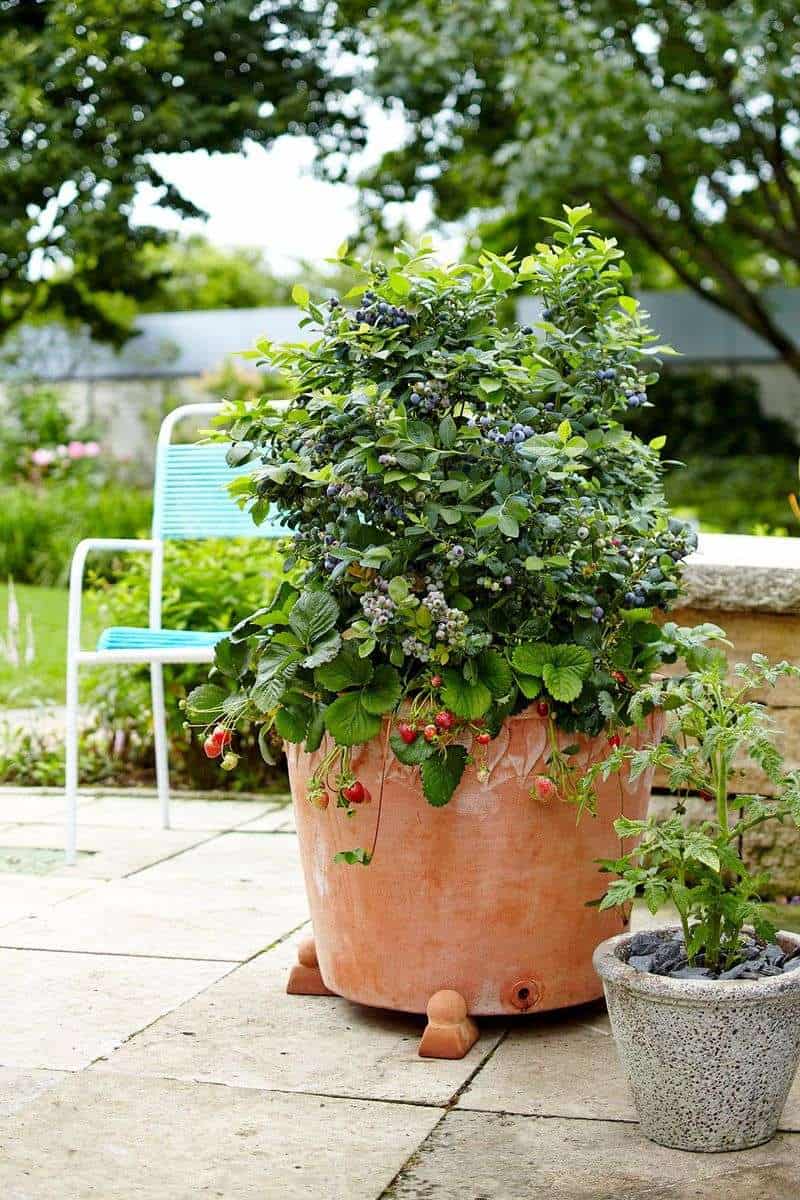
Blueberries thrive in full sun. Position containers where plants receive at least six to eight hours of sunlight daily. Adjust placement with seasonal changes to optimize light exposure.
Consider using movable containers for flexibility. Adequate sunlight is critical for photosynthesis, leading to healthier plants and sweeter berries.
8. Prune for Shape and Health
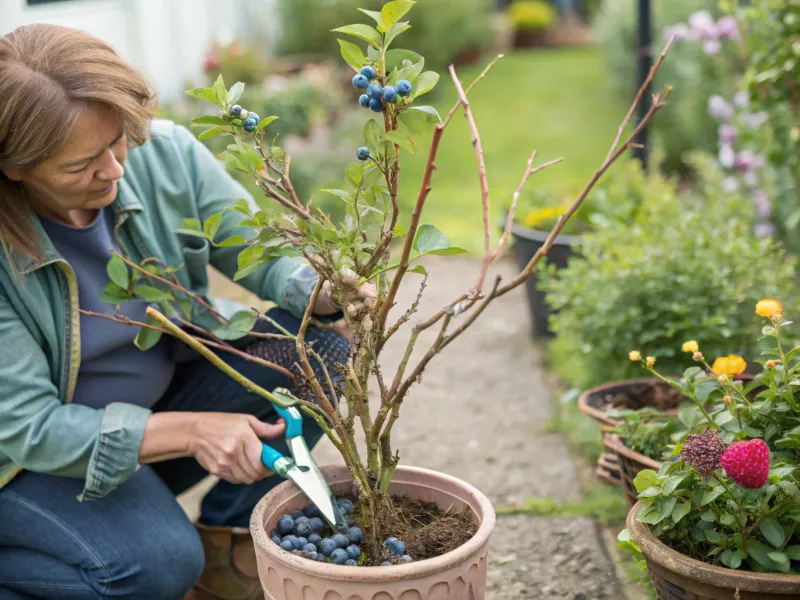
Pruning helps manage plant size and encourages fruit production. Remove dead or diseased branches. Trim to shape plants and improve air circulation.
Prune in late winter when the plant is dormant. Regular pruning prevents overcrowding and promotes healthy growth, sustaining productivity year after year.
9. Protect from Pests and Diseases
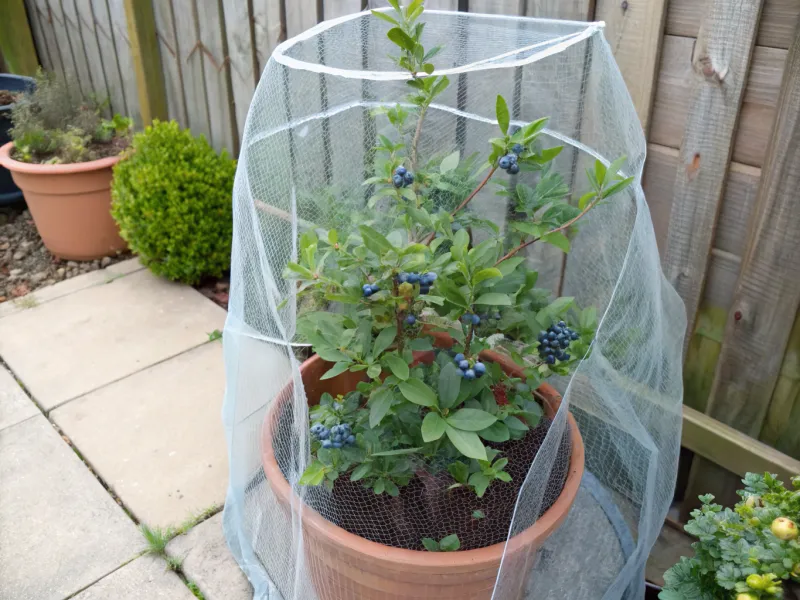
Use barriers like netting to protect blueberries from birds and insects. Inspect plants regularly for signs of disease. Implement organic pest control methods when needed.
Maintaining good plant hygiene reduces disease risk. Early intervention prevents serious infestations. Protecting plants ensures a healthy, productive blueberry harvest.
10. Monitor Seasonal Changes
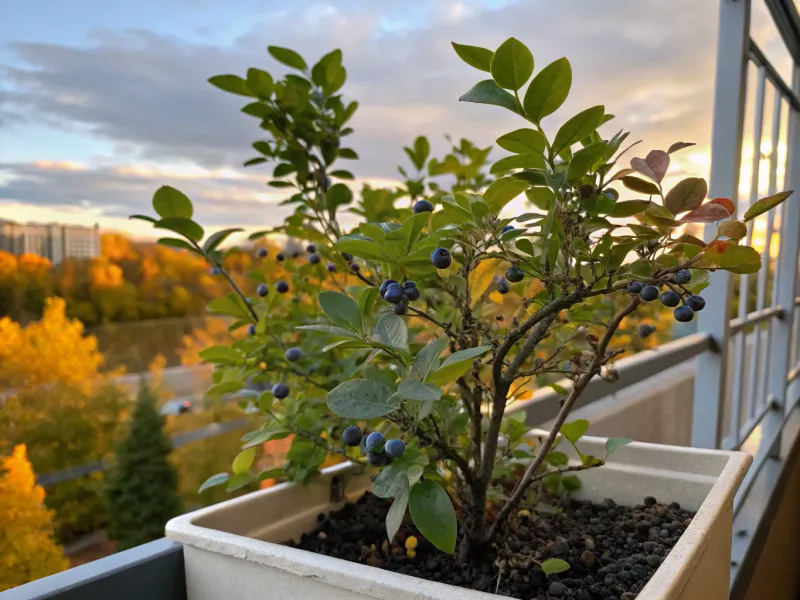
Adapt care routines with seasonal changes. In winter, mulch adequately protects roots from freezing. During growing seasons, adjust watering and feeding schedules.
Move containers to sheltered areas if needed. Being mindful of seasonal variations helps maintain plant health throughout the year. This adaptability ensures ongoing productivity.

